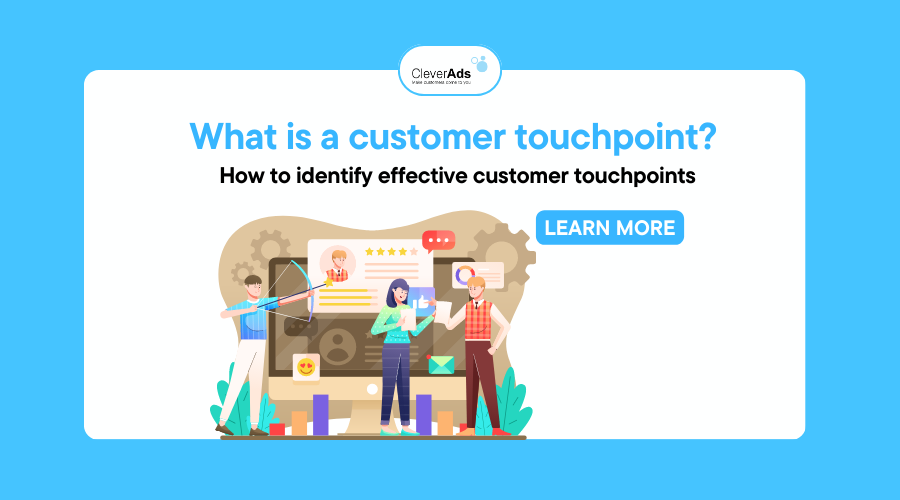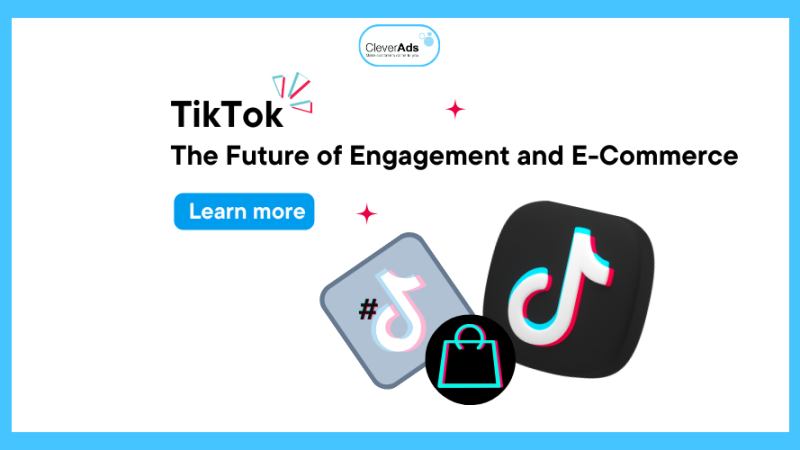What is a customer touchpoint? How to identify effective customer touchpoints

What is the customer touchpoint? A business can provide a good quality product with great service, but if there are still some issues like payment errors or an unwieldy website design, it will make the guest experience worse. goods are significantly reduced. However, all these touchpoints are within the control of businesses and to be able to improve these issues, businesses need to aggregate all customer touchpoints in their journey and Collect feedback most impartially.
1. What is a customer touchpoint?
- Customer touchpoints are their touch points with the brand throughout the purchase process. For example, customers find information about a business while surfing the web or in an advertisement, when they view product reviews and ratings when they visit a business website or shop at a retail store or contact customer service. All of the above factors are considered customer touch points.
- So what are customer touchpoints? How can they help you make business decisions?
- Customer touchpoint definition is any time a customer comes into contact with a brand, including – before, during, or after the purchase process.
- Identifying customer touchpoints is the first step in building a customer journey map and ensures that your customers are satisfied all the time.
2. Importance of customer touchpoints
Once correctly defined, touchpoints make an important part- in improving customer satisfaction throughout the whole purchase journey.
The benefits of identifying the right customer touchpoints include:
- Reduce customer service stress: improving customer satisfaction rates at each touchpoint will improve the odds of a problem occurring during the first contact between customers and businesses.
- Better customer experience: businesses need to ensure that customers have a seamless experience across all communication channels
- Repeat buying experience: a great experience will influence the customers to decide to buy a certain product again from the same company.
- Build loyalty: increased customer satisfaction means you have been able to build your loyal customer base. The benefits of identifying the right customer touchpoints include:
- Reduce customer service stress: improving customer satisfaction rates at each touchpoint will improve the odds of a problem occurring during the first contact between customers and businesses.
- Better customer experience: businesses need to ensure that customers have a seamless experience across all communication channels
- Repeat buying experience: a great experience will influence the customer’s decision to buy a certain product again from the same company.
- Build loyalty: increased customer satisfaction means you have been able to build your loyal customer base.
Read more: Understanding marketing strategy through 5 most successful examples
3. Some examples of customer touchpoints
Businesses can identify customer touchpoints by making a list of all the places and times that customers may come into contact with the brand.
Below is a list of some of the customer touchpoints that can be introduced in the business, but the touchpoints may not be the same due to differences in the nature and characteristics of each business.
3.1 Before buying
How can customers find and know the business? These are considered the first touch points of customers before they come into direct contact with your products and services and start their buying journey.
Online Advertising
Businesses need to ensure that online promotional links lead to the right content that is directly related to products and services. If the ad has a sale, make sure the link leads the customer to the correct page that describes or displays the details of the discounted items.
While all businesses want customers to spend time exploring their websites, this is not the time to direct them to a service registration form or website homepage. Businesses should create better customer experiences (CX) with a landing page with the right content.
Read more: Summary of 6 popular Marketing Tool groups for Marketers.
Social media
Your business does not necessarily need coverage on all social media, but make sure it covers the channels your target users use. Business information pages need to provide interesting, useful information and most importantly, respond to all customer comments so that you can begin the procedure of forming relationships with potential customers.”
Website
When potential customers visit your website, it’s important to note that they need to find the information they want quickly and easily. This requires the website to be extremely intuitive and designed to be easy to navigate. Pages providing product information must have clear images and descriptions that accurately represent the products and services of the business. Video may be considered if the product or service is difficult to describe with words or pictures.
If customers have visited your website and they can’t find what they’re looking for, they’ll likely look elsewhere (perhaps at a competitor’s site). Therefore, businesses should learn how customers feel about their website regularly through surveys to be able to process and absorb feedback effectively.
3.2 While shopping
At the point of sale, what do customers usually do? Are the available buying experiences everything they need?
Reviews and reviews
According to a study by Power Reviews, 97% of consumers consult product reviews when making a purchase decision. Businesses need to note that customers are searching for and interested in these reviews more, so leverage their influence in social media posts, websites, and documents. your marketing.
Point of sale
At the point of sale, a sales rep or even a business website will provide all the information you need — including what features the product offers, and what it will do with the product. row. This is considered the final touch point before the customer completes the purchase steps.
3.3 After purchase
Point-of-sale touches will continue even after the customer has completed the purchase process. Businesses need to pay more attention to these important touch points in their customer journey map.
Post-purchase survey (feedback)
This is an opportunity for businesses to dig into the details of customer experience. In the process of providing products and services, what problems are difficult, and which problems are easily solved? Using a customer service feedback survey will help you identify where your business needs to improve or fix.
Email list
If your customers have signed up to receive emails about new offers and products, use this opportunity to increase sales and spread the product to more users.
Manage communication channels
Businesses need to continue to deploy and monitor activities on their social media channels. When customers make new comments and share posts about a product, make sure that community site managers are responding and keeping the conversation lively and active.
However, keep in mind that the above list is a good example but it is not a perfect model that can be applied to all markets and types of businesses. Each of these customer touchpoints can have a lot of different elements, for example, the “promotional” element can include touchpoints across different channels and physical stores, which includes dashboards. guides to help people find the store, parking, and the various interactions that take place inside the store.
Read more: What is a marketing consulting service? The leading companies providing marketing consulting services in Vietnam.
4. How to identify customer touchpoints
What is your customer touchpoint? Each business has a different touch point, so managers will have to identify touch points by analyzing the business’s interactions with customers.
Observe target customers and their need
Market research will help businesses assess the purchasing ability of consumers, thereby making accurate decisions about which initial touch point will be more suitable for them. For example, if your target market is new moms-to-be, you can offer programs like adding promo codes and coupons to your social media email marketing and discounts. for new customers.
Put yourself in the customer’s shoes
There are many ways for customers to experience your products and brands, so understanding all the customer touchpoints may seem difficult at first for marketers. But marketers can make these tasks easier by stepping out of their roles – and into the shoes of their customers.
Assuming marketers are in the role of a client, ask yourself the following questions:
- Where are you going (and how to get there) when you:
- Have a problem that needs to be solved?
- Looking for products or businesses that can solve that problem?
- Making a purchase decision?
- Interact with the business after making a purchase?
Once marketers have had hands-on experience walking through each step of the customer journey, the touchpoints will become a lot easier to identify.
However, businesses can also work on identifying these touchpoints by asking customers to describe their experience with a brand or by including the questions above in a survey.
Read more: Different forms of Digital Marketing and their benefits
Check and control how consumers interact with businesses
If your business is operating an online store and uses online advertising, social media, and email marketing, you may find that social media brings in the most revenue. Businesses can then leverage this to enhance their social media presence as another touchpoint.
Businesses can learn the space customers want to interact with the brand through a specific content strategy survey.
Create and use customer journey maps and customer experience maps
A customer journey map will help businesses understand the buying process of a specific customer segment who is intending to buy a product or service. In addition, businesses can also draw a specific customer portrait from the process they identify the problem, research the answer, learn about the business their interactions with the business, the process of purchase, and ultimately post-purchase interaction.
Besides, a customer experience map is also considered very useful in discovering why customers do not have a good experience when using products or services. Customer experience maps are used as a way of visualizing the customer journey and identifying areas of business improvement.
Using both types of maps can help businesses pinpoint the touchpoints at each stage of the customer journey so that they can take specific actions to ensure a consistent customer experience. hold at a good level throughout the buying journey.
Categorize customer touchpoints
Categorizing customer touchpoints will help businesses identify exactly what is working well and which needs improvement. Customer touchpoints can be classified into three categories as mentioned above: pre-purchase, in-purchase, and post-purchase. In addition, businesses can also categorize touch points by direction: product, interaction, message (user manual, advertising, etc.), and installation (where the product is sold). Businesses can also define their categories of touchpoints.
Leverage customer feedback
A customer feedback survey will provide businesses with invaluable results in ensuring that they are satisfied at every touchpoint. Make sure the survey covers all touchpoints and should provide immediate responses to bad touches.
Regular review
The customer touchpoint map is considered a living document and needs to be constantly updated as businesses come up with new marketing ideas and purchase paths. Therefore, companies need to constantly refine the map of customer touchpoints to be able to ensure the best customer experience.
5. How to properly leverage customer touchpoints
Accurately identifying customer touchpoints is only half the journey. To improve customer satisfaction, businesses need to ensure that every touchpoint leads to a good experience and meets customer expectations.
To control the whole process, businesses can launch customer feedback surveys at each key touchpoint or set up customer experience management software. However, make sure the big picture stays in check and always look at the entire customer journey.
Identify missed opportunities
The best way to properly identify what remains in the customer journey is to use surveys to gauge their experience at different touchpoints. Quantitative data collected will provide businesses with information about the issues that businesses are not doing well in their marketing efforts. In particular, some of the smaller touch points that businesses have not done well can become an important and indispensable part of providing services to high-end customers.
Identify high-value touchpoints
Not every customer touchpoint in your marketing campaigns needs to have the same solution. Specific analysis is required to identify the touchpoints that are doing best and determine the right location for them.
Better customer experience
Provide specific analysis of the feedback from the customer’s experience with the brand from the beginning to the end of the journey. Set priorities, address gaps in the customer journey, and fix problems at their root. This will help improve satisfaction, enhance customer experience, and build your brand reputation as a company that puts customers first.
Collect feedback
The best way to find out what customers are interested in at each touchpoint is to ask them directly. The side customer survey covers all touchpoints to find out where the customer experience falls short and where the business excels over its competitors. Then, identify touch points that need improvement and take action on them. Finally, customer feedback can help businesses increase satisfaction, retain customers, and engender loyalty among them.
Build a loyal customer base
Improving the customer experience at every touchpoint will dramatically improve overall customer satisfaction. This will increase their loyalty and make them use word of mouth to support your brand.
Read more: Everything you need to know about Marketing Strategy Consulting?
6. Epilogue
This can be seen that the customer’s experience with the brand begins before their first interaction with the product or service. Therefore, businesses need to identify customer touchpoints before, during, and after the purchase process and then use these points to create a customer touchpoint map. Then, get customer feedback at every touchpoint to improve their satisfaction, experience, and retention.


